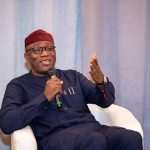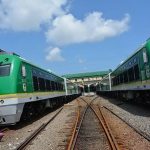Abuja, Nigeria
Nigeria’s state-owned railway management body, the Nigerian Railway Corporation (NRC), on Wednesday unveiled an ambitious National Railway Development Roadmap, signalling a transformative push to connect all 36 states and the Federal Capital Territory (FCT) under President Bola Ahmed Tinubu’s policy push in the sector.
Announced during a press briefing on Nov. 5, the plan aims to modernise the country’s rail network with electrification within five years, a doubling of capacity in 10 years, and an expansive 60,000-kilometer network within two decades, according to the NRC.
The roadmap, detailed in a statement by NRC’s Chief Public Relations Officer, Callistus Unyimadu, builds on recent legislative changes that place railway development on the concurrent list of the country’s federal constitution, allowing states to access and utilise national rail corridors at no additional cost. “We are saying where there is a national rail asset, states should make use of it,” said Kayode Opeifa, Managing Director of the NRC and a key figure in the initiative.
Early adopters include Nigeria’s commercial nerve centre, Lagos state, and the northern state of Plateau, with others encouraged to follow suit. The plan, dubbed “Vision 2-5-10-20,” outlines a phased approach. Within two years, the NRC aims to optimise existing rail assets. By year five, the network will transition to electric traction, a move Opeifa described as a cornerstone of modernisation.
The 10-year mark targets doubled capacity, while the 20-year goal envisions a vast 60,000-kilometer network, a significant leap from the current infrastructure. Freight expansion, including commodities like gypsum and cement for projects such as the Ajaokuta-Kaduna-Kano (AKK) Pipeline, is also a priority, the NRC stated.
Historically, Nigeria’s rail system, which was largely built by British colonial authorities, spans about 3,500 kilometres of Cape gauge tracks, with the Western Line linking Lagos to Nguru and the Eastern Line connecting Port Harcourt to Maiduguri. A planned 4,000-kilometer high-speed network, backed by a $60 billion investment from De-Sadel and China Liancai Petroleum, has secured 90% regulatory approval, indicating growing private-sector interest.
Tinubu framed the initiative as part of a broader infrastructure overhaul. The roadmap is part of this vision, aiming to boost economic opportunities and living standards, as echoed by the Minister of the Federal Capital Territory (FCT), Nyesom Wike.
The announcement has, however, sparked mixed reactions. While some stakeholders welcome the enhanced connectivity, some critics have questioned the timing and intent. Concerns linger over perceived regional imbalances, with some alleging the 2025 budget side-lined infrastructural projects in the country’s southeast region. Insecurity, a persistent national challenge, further fuels scepticism, with critics arguing that rail expansion could facilitate movement of threats rather than progress.
The NRC’s electrification drive addresses longstanding inefficiencies. The current network, heavily reliant on outdated tracks, has struggled to meet demands for cheaper and efficient transportation, with the Abuja-Kaduna standard gauge line outperforming the broader Cape gauge system in revenue since 2019. The roadmap’s success hinges on funding, execution, and public trust, areas where past infrastructure projects have faltered.
Analysts see potential but caution against too much optimism. “The vision is bold, but Nigeria’s history of project delays and corruption poses risks,” said an unnamed transport expert. The government’s reliance on indigenous contractors, while cost-effective, raises questions about capacity, though Wike has praised the performance of local contractors on recent projects in the capital, Abuja.
The roadmap’s inclusive approach, which plans to connect all states, could bridge regional divides if executed equitably, but historical tensions suggest challenges ahead. The coming months will test the government’s ability to deliver. With legislative support and private investment, the plan could redefine transportation. Overcoming scepticism and logistical hurdles, however, will be critical to turning vision into reality.











